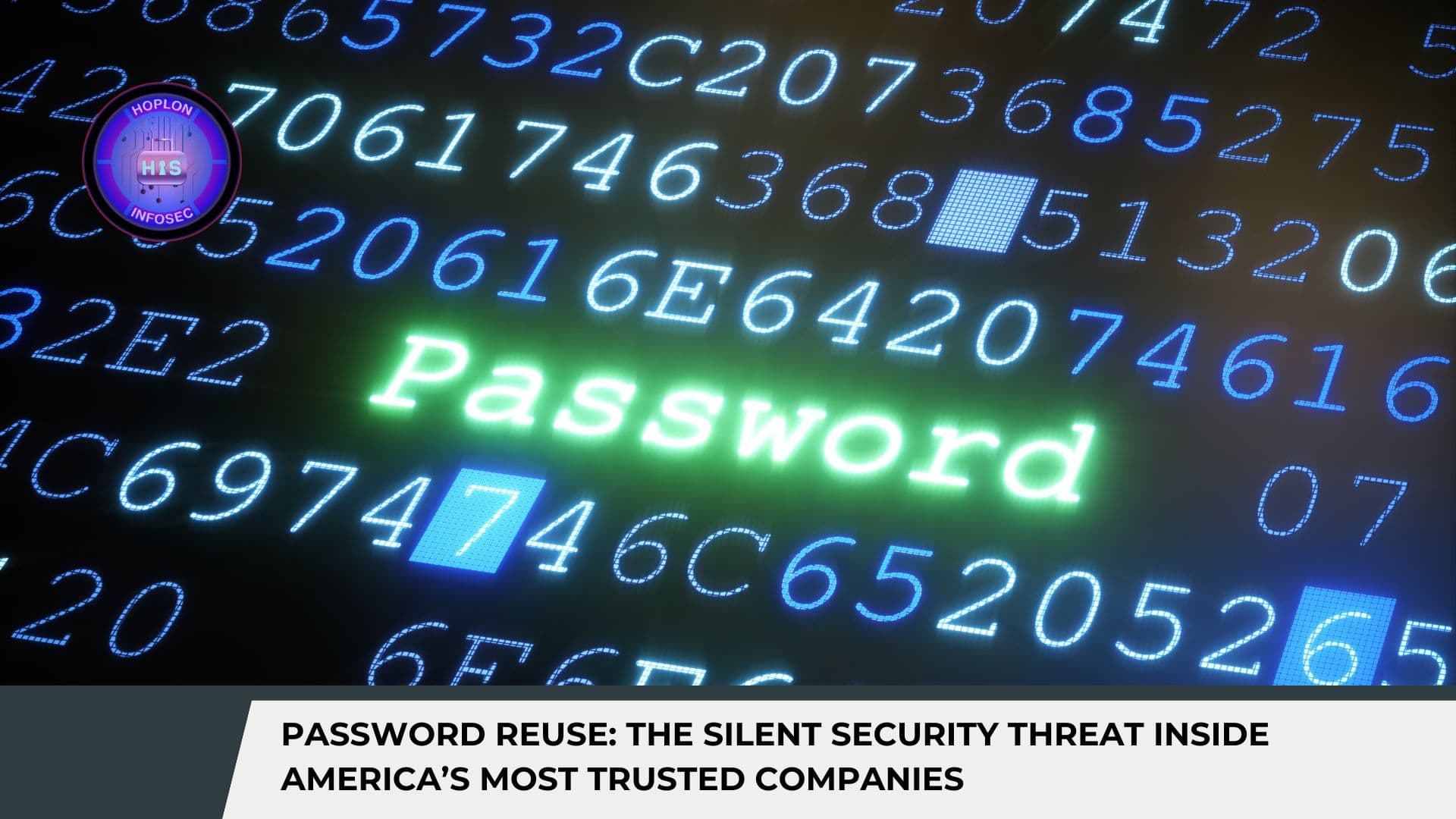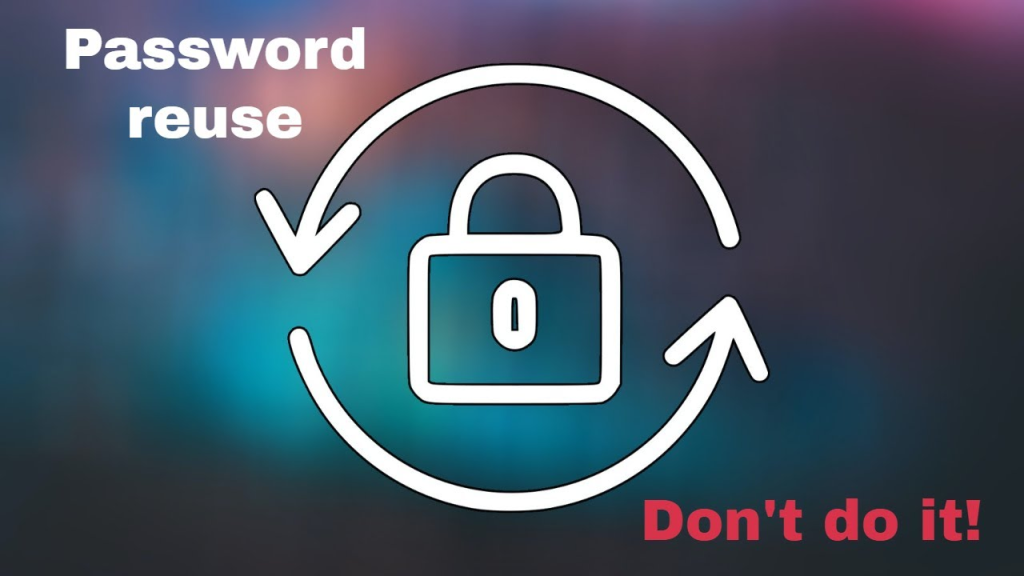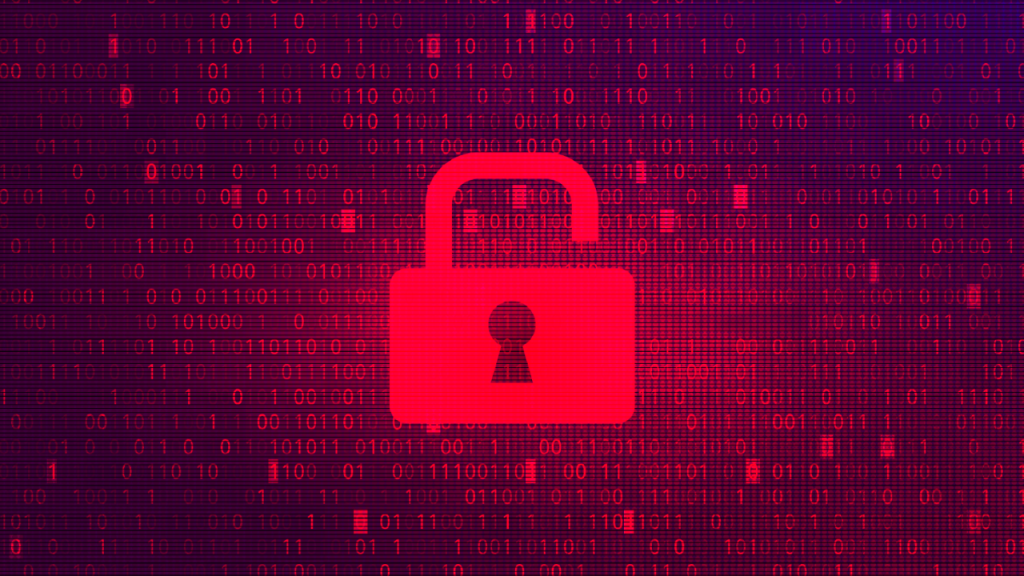Password Reuse: The Silent Security Threat Inside America’s Most Trusted Companies

Hoplon InfoSec
28 Apr, 2025
Do you know that Password Reuse is common at the top 46% of trusted American companies? In today’s hyper-connected world, cybersecurity is no longer just an IT department concern; it’s a fundamental part of a company’s overall health, reputation, and financial stability. As businesses invest heavily in firewalls, encryption, and AI-driven threat detection, one major weakness remains: human behavior.
A recent report from GlobeNewswire revealed a troubling statistic: 46% of employees at some of America’s most trusted companies are reusing passwords, including ones already exposed in past data breaches. Companies renowned for operational excellence and customer trust, like Apple, Nvidia, Costco, and American Express, face significant cybersecurity risks from within.
The Hidden Danger of Password Reuse

While companies spend millions of dollars to secure their networks, servers, and customer databases, the reality is that a single reused password can undo all those efforts. Many employees don’t realize the danger of reusing passwords, but cybercriminals do. Hackers use credential stuffing, taking leaked username-password pairs from past breaches and trying them on other sites and systems. Since so many people reuse passwords, this method often works shockingly well.
Suppose a Costco employee, for example, has reused their corporate email and password on a personal shopping website that suffered a breach. In that case, hackers can use that same login to access Costco’s internal systems, potentially exposing sensitive company data, financial records, and customer information.
The stakes are exceptionally high for trusted organizations. If a well-known company is breached, the damage isn’t just financial; it can cause:
- Loss of customer trust
- Reputation damage
- Regulatory penalties
- Intellectual property theft
- Business disruption
With cybercrime costs projected to reach $10.5 trillion annually by 2025 (according to Cybersecurity Ventures), companies cannot afford to ignore the risks posed by poor password hygiene.
Why Do Employees Reuse Passwords?
If password reuse is such a well-known risk, why do employees continue to do it? Surprisingly, the reasons are not malicious, but they are dangerously common:
1. Password Overload
The average employee has to manage dozens, if not hundreds, of passwords for different platforms and tools. Many resort to reusing simple, memorable credentials without an easy way to store and organize them.
2. Overreliance on Memory
A recent study found that 54% of people rely solely on their memory to manage passwords. Because it’s nearly impossible to remember dozens of strong, unique passwords, people tend to recycle the same ones across multiple sites.
3. Lack of Awareness
Many employees believe that using one strong password (like “SecurePass#2024”) is enough to keep them safe. They don’t realize that even a strong password is useless once leaked in a data breach.
4. Inadequate Cybersecurity Training
Many companies provide basic cybersecurity training once a year, but this often fails to make a lasting impact. Employees are unlikely to change their password habits without ongoing awareness programs and practical tips.
5. Inconvenience of Security Policies
Some companies enforce frequent password changes, but instead of improving security, this often backfires. Employees resort to easy-to-remember variations (e.g., “Password123” → “Password124”) or write down passwords on sticky notes, which defeats the purpose.
How Can Companies Stop the Password Reuse Crisis?

If nearly half of employees at major corporations are reusing passwords, even ones that have already been breached, a stronger approach is needed. Here’s what businesses can do to fix the problem:
1. Provide Password Managers
One of the simplest and most effective solutions is to provide employees with a company-approved password manager like LastPass, 1Password, or Bitwarden. These tools generate strong, unique passwords for every account and auto-fill login fields, eliminating the need for employees to remember them manually.
2. Enforce Multi-Factor Authentication (MFA)
Even the best password can be compromised, so companies should require MFA for all critical accounts. With MFA, even if an attacker steals a password, they still need an extra verification step, such as a mobile authenticator app, SMS code, or security key, to gain access.
3. Implement Regular Security Training
Cybersecurity training shouldn’t be a one-time event. Companies need ongoing, engaging training sessions that cover:
- Password hygiene best practices
- Phishing awareness (since many breaches start with phishing emails)
- Recognizing social engineering attacks
- How to check if personal passwords have been leaked (using sites like Have I Been Pwned)
Interactive training, such as live demos, phishing simulations, and quizzes, can significantly improve employee awareness.
4. Conduct Password Audits and Monitoring
Organizations should use security tools that scan for weak, reused, or compromised passwords automatically. Many cybersecurity platforms can flag risky passwords in real time, allowing IT teams to prompt employees to change them immediately.
5. Shift the Company Culture Toward Security
Technology alone won’t solve the problem. Companies must build a security culture where employees see cybersecurity as part of their job, not just an IT issue. This can be achieved by:
- Recognizing and rewarding employees who follow best security practices
- Encouraging open communication about security concerns
- Making cybersecurity training more interactive and engaging
- Empowering employees with the right tools and knowledge
The Bottom Line: Password Reuse Is a Silent but Serious Threat

Even America’s most admired companies, including industry leaders in technology, finance, and retail, are vulnerable to internal cybersecurity risks. While these organizations invest in high-tech defenses, password reuse remains a weak point that hackers can easily exploit.
The solution lies not in better technology but in changing employee behavior and strengthening the security culture. By giving employees the right tools (password managers), enforcing strong security policies (MFA, audits), and providing better education, companies can significantly reduce the risk of breaches and protect their brand and customers.
If nearly half of employees are reusing passwords, businesses can no longer afford to ignore this problem. A single reused password can be the key that unlocks an entire corporate network. Companies that take proactive steps now can prevent costly breaches, avoid reputational damage, and build a security-first workplace culture.
Cybersecurity isn’t just an IT issue; it’s everyone’s responsibility.
Share this :